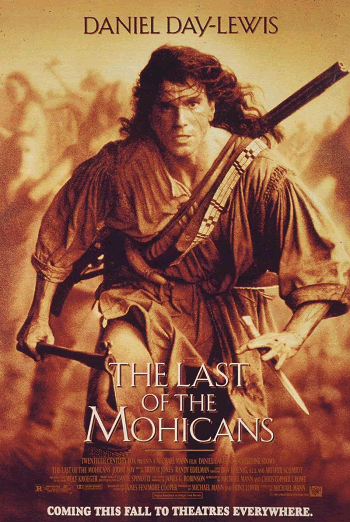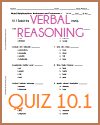| The Last of the Mohicans (1992) Film Educator Guide |
|---|
| www.studenthandouts.com ↣ U.S. History ↣ Colonial Period ↣ Colonial Period Books & Films |
 Length: 111 minutes (1 hour, 51 minutes)
Length: 111 minutes (1 hour, 51 minutes)Age appropriateness: The Last of the Mohicans is officially rated "R" for violence in the United States. This violence is war-related, however, and not gratuitous. Check with your school's policy, but most teachers should not have problems showing this movie in class to high school students (the novel on which it is based is on many high school reading lists). Creators and stars: Colm Meaney, Daniel Day-Lewis, David Schofield, Dennis Banks, Dylan Baker, Edward Blatchford, Eric D. Sandgren, Eric Schweig, James Fenimore Cooper, Jared Harris, Jodhi May, John L. Balderston, Justin M. Rice, Mac Andrews, Madeleine Stowe, Malcolm Storry, Mark A. Baker, Mark Joy, Michael Mann, Mike Phillips, Patrice Chereau, Pete Postlethwaite, Russell Means, Steven Waddington, Terry Kinney, Tim Hopper, Tracey Ellis, Wes Studi Accuracy: The Last of the Mohicans is fairly close to the James Fenimore Cooper novel on which it is based. Differences between the novel/script and the historical record are detailed in the review below. Review: The Last of the Mohicans is adapted from the James Fenimore Cooper novel (1826) of the same name. It is set in New York Province during the Seven Years' War (1756-1763, known as the French and Indian War in the United States). During this war, the English and French fought for control of lands in North America. More particularly, this film depicts the defense of Fort William Henry by Lt. Col. George Monro in 1757, and the ambush of his troops by Indian allies of the French that took place following his surrender. Fictional elements of Cooper's story are created to explain why France's Indian allies attacked the English following their peaceful surrender. Falsehoods include the creation of two daughters for Monro (in fact, he is not known to ever even have married). The characters of Magua, Nathaniel (Hawkeye), Uncas, and Chingachgook are likewise fictional. The Mohicans (Mahicans) are real, and still exist today (you can check them out online here). The Mohicans depicted in this film may have been the last in New York at the time, since the group (affiliated with the Mohawk) had migrated southwest to Pennsylvania by the late 18th century due to the westward movement of white settlers. Furthermore, Lt. Col. Monro did not die during the ambush; he passed away several months later of natural causes. Despite its big budget, lavish production, and critical acclaim, Last of the Mohicans is littered with anachronisms and goofs, too many to list here. For those who enjoy looking for movie goofs, keep your eyes peeled for buses in the distance, telephone poles, and crew members in crowd scenes. I recommend Last of the Mohicans for students studying this period in history because of its rich illustrations of life on the frontier before the American Revolution. Students will see the encroachment of white settlers upon Native American lands, the disputes between the French and English over which European power controlled the land, and a growing feeling of "American-ness" rather than "British-ness" by settlers. Most films depicting Native Americans focus on Plains Indians, whereas this story is set in New York. When watching this film, be certain to talk with students about the displacement of Native American groups as white settlers pushed farther and farther west. Click here to enlarge the film poster. Review and discussion questions: (1) Describe the life of colonial settlers on the frontier. (2) Why do the Mohicans set the English horses loose after the ambush? (3) Why do the colonial militiamen want to leave Fort William Henry? (4) Why is Magua intent on killing Monro and his daughters? (5) Describe the ambush on the retreating British soldiers. (6) Imagine that you are a settler of British ancestry living in the frontier of New York Province during the French and Indian War. Would you want to fight at a site like Fort William Henry? Why or why not? (7) Locate the following on a map: Albany, Fort Edward, Fort William Henry, Hudson River, and Lake George. Vocabulary terms and names: Albany, allies, ambush, British, canoe, colonial militia, desertion, Fort Edward, Fort William Henry, French, French and Indian War, frontier, General Daniel Webb, General Marquis de Montcalm, Hudson River, Huron, lacrosse, Lake George, Lt. Col. George Monro, Mahicans (Mohicans), massacre, Mohawks, musket, Native American tribes, New York Province, Ottawa, reinforcements, scalp, scout, sedition, settlements, Seven Years' War, soldiers, surrender. |
 |  |  |  |  |  |
| Colonial Period Books and Films | Colonial Period Learning and Study Games |
| Colonial Period Image Galleries | Colonial Period Outlines and PowerPoints |
| Colonial Period Miscellany | Colonial Period Worksheets |
| www.studenthandouts.com ↣ U.S. History ↣ Colonial Period ↣ Colonial Period Books & Films |








